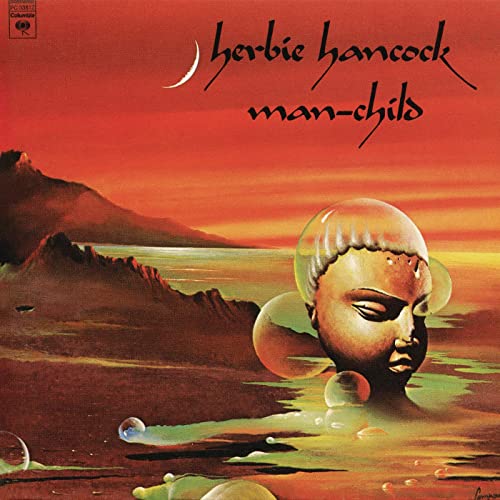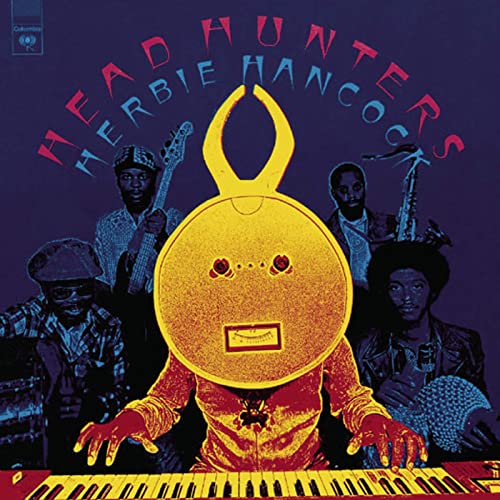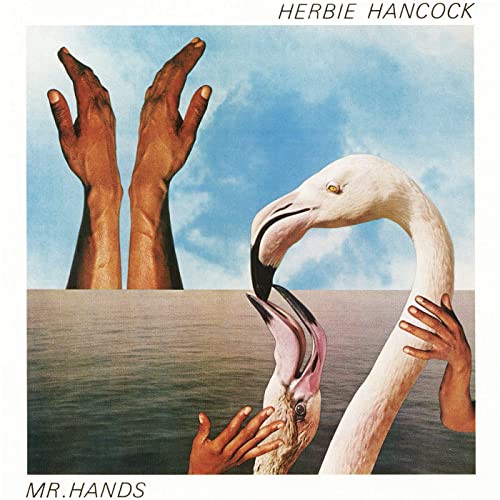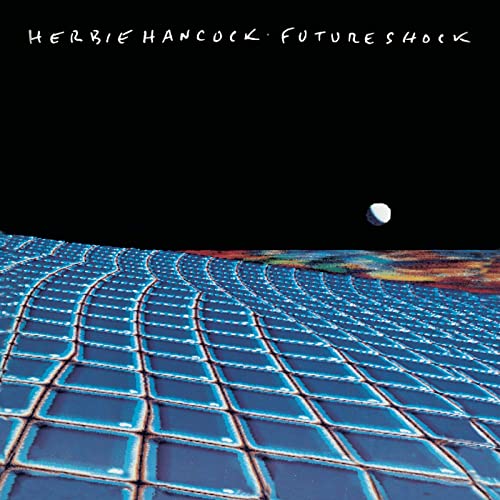Startseite › Foren › Über Bands, Solokünstler und Genres › Eine Frage des Stils › Blue Note – das Jazzforum › Ich höre gerade … Jazz!
-
AutorBeiträge
-
gypsy-tail-wind
vorgarten
aber steve coleman als young lion – wie mag das gemeint sein? eher marvin smitty smith, wobei der ja immer eine persönlichkeitsspaltung zwischen m-base & marsalis hatte oder robin eubanks, der wohl heute noch nicht weiß, was eigentlich sein ansatz ist.
oder robin eubanks, der wohl heute noch nicht weiß, was eigentlich sein ansatz ist.War nur eine blöde Bemerkung wegen Coleman – den ich halt selten so toll finde wie auf „Jumpin‘ In“, also ich finde ihn ja überhaupt nicht schlecht, aber hier ist er halt wirklich super!
das verstehe ich sehr gut, ich mag diese frühe phase (spät70er bis 1991) von coleman auch total gerne, alle fünf auftritte mit holland auf ecm, die sachen mit doug hammond und das akustische debüt, das ja eigentlich für enja produziert werden sollte. und das duo-album mit holland auf diw.
hab gerade dieses interview mit johannes völz gefunden, wo er über die anfänge mit dave holland um 1980 herum und dann über die band erzählt:
S.C.: [that was a]fter he played with Sam Rivers and Circle, yes. I started talking to him about doing something in about ’78 or ’79, but we didn’t actually get together until about ’81. When we started playing together we had these different ideas about what we liked. We would sit down and listen to records. Of course, we had differences. They were sometimes just a matter of taste, many times cultural differences, you know, he grew up in England and I grew up in Chicago. But there were a lot of other things that were obviously common, otherwise we would not have sat down and talked. Okay, so when it comes to making music, he’s telling me why he wants to play with me, I’m telling him why I might be interested in playing with him, you know. One of the biggest differences, to put it that way, was our idea about structure. For him, like I say, he just came out of this free-form and he found it really enjoyable to not give any parameters at all. And I said, “Well, Dave, when you don’t give any parameters, that’s like giving parameters.” And he said, “Well, what do you mean by that? I have the freedom to play what I want!” I said, “If you give somebody the freedom to play what they want they will tend to do the same thing over and over.” He didn’t buy this, in the beginning. I said, “Let somebody do whatever they want over and over, I mean complete freedom, and they will fall into habits and will do the same thing over and over.” Actual freedom to me is choices.
J.V.: That’s a pretty restrictive idea of freedom, considering that it’s not you who will decide what you can choose from.
S.C.: First of all, there is no such thing as freedom. We’re human beings, we’re creatures of habit. But if we have more choices, the illusion of freedom is greater than if we have less choice. The average musician, if you tell him to do what he wants, or she wants, they’re not going to develop certain skills because they will just fall into what’s easiest for them to do. If you force them out of certain habits, they will be forced to develop certain skills to deal with those things. So we had this argument over and over and over. The argument was really solved by the music itself. Because after we started playing – his approach was to write open tunes and my approach was write tunes with these varying structures, and there was also Kenny Wheeler who wrote mostly from a harmonic standpoint – the music that people heard was a combination of all these approaches. It wasn’t one approach. Eventually, these things started influencing each other and sort of coming together. I saw some points in what he said, and he saw some points in what I said, and so the character of the group was formed. Eventually he ended up doing music almost all of which had some kind of structure, as you can see from his music today. His music started to have more and more structures, he really got into rhythms, because this is what I was into. At the same time, I felt certain advantages of what he was doing and the language that he was dealing with. But actually the language that he was dealing with, I looked at it more as the people who he was influenced by, people like Sam Rivers, who I also played with. It was Sam Rivers who really had this strong open thing happening. But what I discovered was that the people who really played open the best knew structure. I guess what I’m saying about structure is that the structure itself is an influencing factor which you are forced to deal with when you impose it as an organizational factor.
gypsy-tail-windich greife daher ein paar Katalognummern vor:
:format(jpeg):mode_rgb():quality(90)/discogs-images/R-1172696-1294635846.jpeg.jpg)
Keith Jarrett – Changes | Das erschien ja noch vor „Standards Vol. 2“, aber die entstanden beide bei denselben Sessions wie Vol. 1, die Reihenfolge spielt also nur katalognummerntechnisch eine Rolle. Vermutlich gefallen mir die Standards-Alben etwas besser – aber ich freue mich natürlich riesig auf das Wiederhören von „Changeless“ und bin auch auf das Wiederhören mit „Inside Out“ gespannt (das gewiss erst nach dem Alice Coltrane-Intermezzo stattfinden wird )
)
CHANGES ist ja ein liebling unter den trio-aufnahmen von mir, es hat einen tollen organischen flow, sehr unangestrengt, und ist wirklich komplett unhierarchisch, der fokus verschiebt sich permanent von einem zum anderen. es empfiehlt sich sehr, das mal sehr laut zu hören. problematisch finde ich tatsächlich das cover hier, das sich irgendwie gar nicht mit der musik verknüpft – vielleicht ist es deswegen immer ein wenig unter dem radar gelaufen.
--
Highlights von Rolling-Stone.deWerbungInteressant, Colemans Standpunkte zu lesen – bin glaub ich nicht überall einverstanden, ist ja z.B. nicht so, dass Gateway völlig offenen, freien Jazz gemacht hätte (also: Holland had zwischen Circle und dem Quintett sehr unterschiedliches und beileibe nicht nur freies Zeug gemacht). Aber wie gesagt: interessant zu lesen, danke!
Was „Changes“ angeht, gestern ging es mir damit mal wieder so, dass ich nach 10 oder 15 Minuten plötzlich dachte: Wow, was ist jetzt passiert, den Anfang fand ich so dahinplätschernd uninteressant, wie kamen wir denn jetzt in *diese* Zone!? Das Cover spielte bei mir nie eine Rolle, weil ich das Album, wie ach Standards Vol. 2, erst im Rahmen des 3-CD-Set kennenlernte.
Diese Alben sind übrigens schöne Knacknüsse für Leader/Co-Leader, also gleiche Schrift aber der Leader vor, die anderen hinter dem Albumtitel … finde ich am Ende ja unerheblich, aber da wir das Thema schon ein paar Male hatten

--
"Don't play what the public want. You play what you want and let the public pick up on what you doin' -- even if it take them fifteen, twenty years." (Thelonious Monk) | Meine Sendungen auf Radio StoneFM: gypsy goes jazz, #164: Neuheiten aus dem Archiv, 10.6., 22:00 | Slow Drive to South Africa, #8: tba | No Problem Saloon, #30: tba
soulpope "Ever Since The World Ended, I Don`t Get Out As Much"Registriert seit: 02.12.2013
Beiträge: 56,509
vorgarten
gypsy-tail-wind
vorgarten aber steve coleman als young lion – wie mag das gemeint sein? eher marvin smitty smith, wobei der ja immer eine persönlichkeitsspaltung zwischen m-base & marsalis hatte
 oder robin eubanks, der wohl heute noch nicht weiß, was eigentlich sein ansatz ist.
oder robin eubanks, der wohl heute noch nicht weiß, was eigentlich sein ansatz ist.War nur eine blöde Bemerkung wegen Coleman – den ich halt selten so toll finde wie auf „Jumpin‘ In“, also ich finde ihn ja überhaupt nicht schlecht, aber hier ist er halt wirklich super!
das verstehe ich sehr gut, ich mag diese frühe phase (spät70er bis 1991) von coleman auch total gerne, alle fünf auftritte mit holland auf ecm, die sachen mit doug hammond und das akustische debüt, das ja eigentlich für enja produziert werden sollte. und das duo-album mit holland auf diw. hab gerade dieses interview mit johannes völz gefunden, wo er über die anfänge mit dave holland um 1980 herum und dann über die band erzählt:
S.C.: [that was a]fter he played with Sam Rivers and Circle, yes. I started talking to him about doing something in about ’78 or ’79, but we didn’t actually get together until about ’81. When we started playing together we had these different ideas about what we liked. We would sit down and listen to records. Of course, we had differences. They were sometimes just a matter of taste, many times cultural differences, you know, he grew up in England and I grew up in Chicago. But there were a lot of other things that were obviously common, otherwise we would not have sat down and talked. Okay, so when it comes to making music, he’s telling me why he wants to play with me, I’m telling him why I might be interested in playing with him, you know. One of the biggest differences, to put it that way, was our idea about structure. For him, like I say, he just came out of this free-form and he found it really enjoyable to not give any parameters at all. And I said, “Well, Dave, when you don’t give any parameters, that’s like giving parameters.” And he said, “Well, what do you mean by that? I have the freedom to play what I want!” I said, “If you give somebody the freedom to play what they want they will tend to do the same thing over and over.” He didn’t buy this, in the beginning. I said, “Let somebody do whatever they want over and over, I mean complete freedom, and they will fall into habits and will do the same thing over and over.” Actual freedom to me is choices. J.V.: That’s a pretty restrictive idea of freedom, considering that it’s not you who will decide what you can choose from. S.C.: First of all, there is no such thing as freedom. We’re human beings, we’re creatures of habit. But if we have more choices, the illusion of freedom is greater than if we have less choice. The average musician, if you tell him to do what he wants, or she wants, they’re not going to develop certain skills because they will just fall into what’s easiest for them to do. If you force them out of certain habits, they will be forced to develop certain skills to deal with those things. So we had this argument over and over and over. The argument was really solved by the music itself. Because after we started playing – his approach was to write open tunes and my approach was write tunes with these varying structures, and there was also Kenny Wheeler who wrote mostly from a harmonic standpoint – the music that people heard was a combination of all these approaches. It wasn’t one approach. Eventually, these things started influencing each other and sort of coming together. I saw some points in what he said, and he saw some points in what I said, and so the character of the group was formed. Eventually he ended up doing music almost all of which had some kind of structure, as you can see from his music today. His music started to have more and more structures, he really got into rhythms, because this is what I was into. At the same time, I felt certain advantages of what he was doing and the language that he was dealing with. But actually the language that he was dealing with, I looked at it more as the people who he was influenced by, people like Sam Rivers, who I also played with. It was Sam Rivers who really had this strong open thing happening. But what I discovered was that the people who really played open the best knew structure. I guess what I’m saying about structure is that the structure itself is an influencing factor which you are forced to deal with when you impose it as an organizational factor.
gypsy-tail-windich greife daher ein paar Katalognummern vor:
:format(jpeg):mode_rgb():quality(90)/discogs-images/R-1172696-1294635846.jpeg.jpg) Keith Jarrett – Changes | Das erschien ja noch vor „Standards Vol. 2“, aber die entstanden beide bei denselben Sessions wie Vol. 1, die Reihenfolge spielt also nur katalognummerntechnisch eine Rolle. Vermutlich gefallen mir die Standards-Alben etwas besser – aber ich freue mich natürlich riesig auf das Wiederhören von „Changeless“ und bin auch auf das Wiederhören mit „Inside Out“ gespannt (das gewiss erst nach dem Alice Coltrane-Intermezzo stattfinden wird
Keith Jarrett – Changes | Das erschien ja noch vor „Standards Vol. 2“, aber die entstanden beide bei denselben Sessions wie Vol. 1, die Reihenfolge spielt also nur katalognummerntechnisch eine Rolle. Vermutlich gefallen mir die Standards-Alben etwas besser – aber ich freue mich natürlich riesig auf das Wiederhören von „Changeless“ und bin auch auf das Wiederhören mit „Inside Out“ gespannt (das gewiss erst nach dem Alice Coltrane-Intermezzo stattfinden wird  )
)CHANGES ist ja ein liebling unter den trio-aufnahmen von mir, es hat einen tollen organischen flow, sehr unangestrengt, und ist wirklich komplett unhierarchisch, der fokus verschiebt sich permanent von einem zum anderen. es empfiehlt sich sehr, das mal sehr laut zu hören. problematisch finde ich tatsächlich das cover hier, das sich irgendwie gar nicht mit der musik verknüpft – vielleicht ist es deswegen immer ein wenig unter dem radar gelaufen.
Ja, einer der doch eher raren „mishits“ von ECM ….
--
"Kunst ist schön, macht aber viel Arbeit" (K. Valentin)gypsy-tail-windist ja z.B. nicht so, dass Gateway völlig offenen, freien Jazz gemacht hätte
ja, absolut. coleman erwähnt ja auch rivers als gemeinsamen bezugspunkt, braxton wäre der andere, und dann hat man CONFERENCE OF THE BIRDS, und da ist das spätere quintet ja schon konzeptionell vorgedacht. ich kann mir auch nicht vorstellen, dass holland mit coleman free jazz spielen wollte.
--
:format(webp):mode_rgb():quality(90)/discogs-images/R-446885-1514827490-2835.jpeg.jpg)
Das ist wohl die Geburtsstunde von Vaporwave? Jedenfalls ein Album, das sehr viel toller ist, als ich es in Erinnerung hatte.
--
A Kiss in the DreamhouseIch musste Vaporwave gerade googeln … aber die Verwandtschaft der PMG zum Smooth Jazz, Muzak, whatever, ist der Hauptgrund, warum ich bis vor einigen Jahren einen weiten Bogen um die Musik der Band (und teils auch die Musik Methenys überhaupt) machte. Das Klangbild hinderte mich quasi daran, die Qualitäten der Musik wahrzunehmen, wenn das Sinn ergibt?
„Offramp“ ist aber wirklich ziemlich schön, hat für meine Ohren einiges mit Nana Vasconcelos zu tun – er hilft, da und dort starre Formen aber auch die irgendwie kodierten Klänge (vgl. „American Garage“) aufzubrechen und das tut der Musik gut. Bei mir steht demnächst „First Circle“ an, das ich noch nicht kenne … und ich habe mich gerade ein wenig aus dem Fenster gelehnt und in Japan noch „Eon“ bestellt, den Erstling von Richie Beirach, auch wenn ich mit „Hubris“ Mühe habe und „Elm“ auch nur so halb gut finde (hab beide nicht physisch) – ich bleibe dran ;-
Dazu passt auch noch meine gestrige Nachtmusik:
:format(jpeg):mode_rgb():quality(90)/discogs-images/R-16088752-1603227638-5064.jpeg.jpg)
Egberto Gismonti/Nana Vasconcelos – Duas Voces | Finde ja allmählich in die Musik Gismontis herein, aber dieses Album – neben den beiden des „Magico“-Trios glaub ich das erste, das ich hörte – bleibt mir teilweise rätselhaft.
@vorgarten: diese Entwicklungen und Zusammenhänge bei Holland/Coleman sind schon sehr interessant! Da läuft quasi jenseits von Loft und dem traditionalistischeren „Strang“ (Murray, Blythe oder auch die Adams/Pullen-Band … ist ja interessant, dass Columbia Blythe dann kurze Zeit quasi in die Young Lions eingereiht hat – wir hören da von heute aus schon deutliche Unterschiede, oder?) nochmal was anderes, was sich irgendwie durchaus als tragfähig entpuppte und – so mal meine Vermutung – die zweite Generation der Young Lions (Redman, Rosenwinkel, Turner usw.) schon auch irgendwie beeinflusst haben dürfte. Die machten ja wieder andere Dinge als Neo-Bop.
--
"Don't play what the public want. You play what you want and let the public pick up on what you doin' -- even if it take them fifteen, twenty years." (Thelonious Monk) | Meine Sendungen auf Radio StoneFM: gypsy goes jazz, #164: Neuheiten aus dem Archiv, 10.6., 22:00 | Slow Drive to South Africa, #8: tba | No Problem Saloon, #30: tba
--

HERBIE HANCOCK – Man-Child
--
Love goes on anyway!gypsy-tail-winddiese Entwicklungen und Zusammenhänge bei Holland/Coleman sind schon sehr interessant! Da läuft quasi jenseits von Loft und dem traditionalistischeren „Strang“ (Murray, Blythe oder auch die Adams/Pullen-Band … ist ja interessant, dass Columbia Blythe dann kurze Zeit quasi in die Young Lions eingereiht hat – wir hören da von heute aus schon deutliche Unterschiede, oder?) nochmal was anderes, was sich irgendwie durchaus als tragfähig entpuppte und – so mal meine Vermutung – die zweite Generation der Young Lions (Redman, Rosenwinkel, Turner usw.) schon auch irgendwie beeinflusst haben dürfte. Die machten ja wieder andere Dinge als Neo-Bop.
ja, coleman als parker- und tatum-fan (struktur!) einerseits, mit ausgiebiger loft-erfahrung andererseits, muss zumindest um 1990 herum ziemlichen einfluss auf junge (schwarze) saxofonist*innen gehabt haben – behauptet wenigstens kenny wheeler hier.
--

HERBIE HANCOCK – Head Hunters
--
Love goes on anyway!
HERBIE HANCOCK – Mr. Hands
--
Love goes on anyway!napoleon-dynamite
:format(webp):mode_rgb():quality(90)/discogs-images/R-446885-1514827490-2835.jpeg.jpg)
Das ist wohl die Geburtsstunde von Vaporwave? Jedenfalls ein Album, das sehr viel toller ist, als ich es in Erinnerung hatte.Daran musste ich neulich beim Wiederhören auch denken. Der GR-300 kann ja manchmal nerven, hier finde ich den Einsatz aber meist sehr gelungen.
--
Hey man, why don't we make a tune... just playin' the melody, not play the solos...
HERBIE HANCOCK – Future Shock
--
Love goes on anyway!kathisi

Habe dieses Cover nie verstanden, was soll das eigentlich für ein Ding sein?
--
bei wiki steht:
The image on the album cover, designed by Victor Moscoso, is based on the African kple kple mask of the Baoulé tribe from Ivory Coast. The image is also based on tape head demagnetizers used on reel-to-reel audio tape recording equipment at the time of this recording.
--
-
Schlagwörter: Ich höre gerade... Jazz
Du musst angemeldet sein, um auf dieses Thema antworten zu können.



